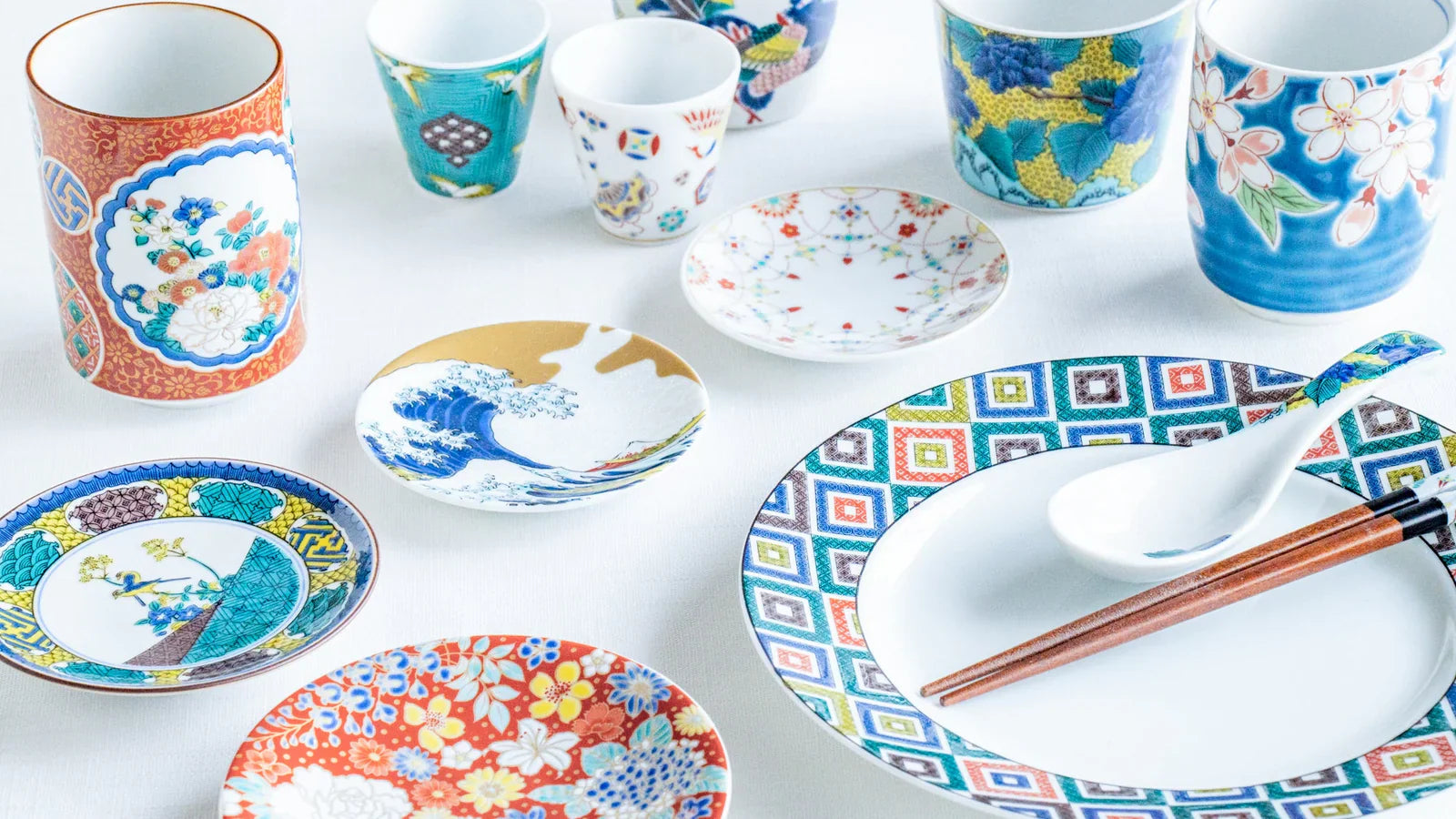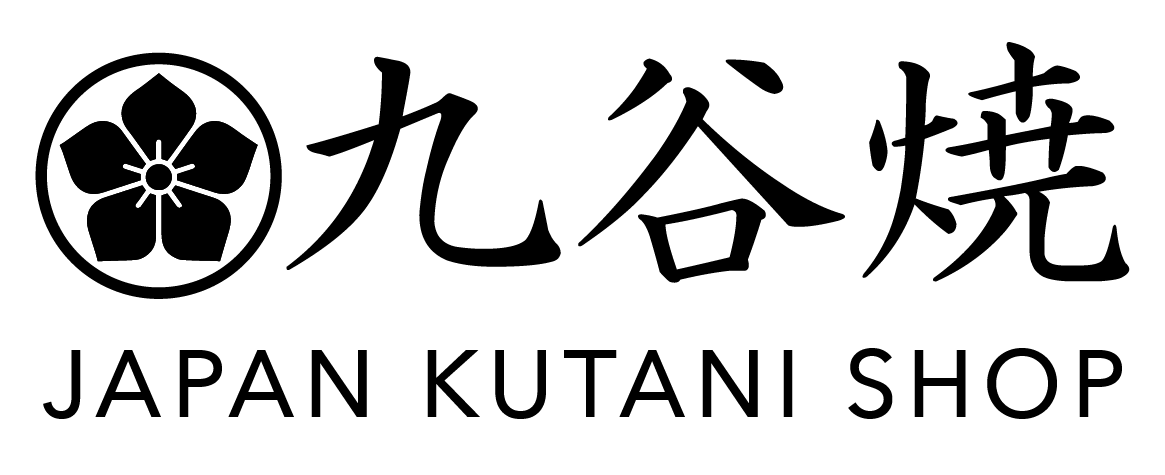
Seikou Kiln | Everyday Tableware from Traditional Kutani Ware
Written by Team Japan Kutani
TABLE OF CONTENTS
The Enchanting Colors of Seikou Kiln
“Isn’t Kutani ware a bit too luxurious for everyday use?” Seikou Kiln is working to change this perception that many people have. Renowned for its overglaze enamel, this kiln creates Kutani ware for modern living, offering pieces that are both accessible and high in quality. Each item features the vivid, vibrant colors that define the Kutani tradition.
So, how is it possible to enjoy such well-made pieces at such reasonable prices?
Let’s take a closer look at the work of Seikou Kiln to find out.
The Joy and Delight of Bringing Ko-Kutani into Daily Life
The Daily Delight Sauce Plate Collection is one of Seikou Kiln’s most popular series. It features small plates that reproduce the designs of ko-Kutani and Yoshidaya Kiln, a central figure in the revival of Kutani ware.
When asked why these particular motifs were chosen, Kitano Keita, head of Seikou Kiln, points to the strength of the designs themselves. “They have enduring appeal,” he says. “Their beauty has already stood the test of time. Ko-Kutani patterns from over 300 years ago and Yoshidaya designs from around 200 years ago remain popular to this day. That shows their timeless appeal across generations.”
Some original ko-Kutani pieces that inspired these sauce plates can be seen in museums, preserved behind glass. These are large plates, about 30 cm (11.8 in) in diameter. Given their artistic value, using them would be, of course, out of the question. And their substantial size would not suit today’s lifestyle.
With Seikou Kiln, these timeless designs are available in the form of smaller plates. For fans of ko-Kutani and the Yoshidaya style, they are an absolute delight.

Affordable Yet Exceptional in Quality
The price point is another notable feature of Seikou Kiln’s work. When asked about the reasoning behind it, director Kitano shares:
“Kutani ware that’s kept in storage and only admired from time to time is, of course, wonderful. But Seikou’s pieces are meant to be part of daily life. If they aren’t priced accessibly, people may feel hesitant to actually use them.”
Still, Seikou Kiln never compromises on quality. Kitano notes that they want every customer to feel confident in their purchase, without regret. So what defines quality in Kutani ware? One important factor is the traditional wa-enogu (Japanese pigments), which give Kutani its signature brilliance and translucency.
A Century of Pigment Research
With a history spanning nearly 100 years, Seikou Kiln has long devoted itself to the research and development of wa-enogu. When the kiln was first established, these pigments were used only by a select few artists and were rarely seen on everyday tableware. Undeterred, the founder began experimenting with wa-enogu from scratch.

Even today, Seikou Kiln continues to develop and refine its traditional wa-enogu pigments in pursuit of even more beautiful color expression.
Kitano explains, “Neither the first-generation founder, the second generation, nor I ever aimed to create one-of-a-kind or overly highbrow pieces. Our focus has always been on how to produce high-quality work in volume and bring it into everyday circulation. That’s still the approach we follow today.”
In order to create pieces for everyday use while upholding the quality expected of Kutani ware, it became essential for Seikou Kiln to undertake their research into wa-enogu—the pigments at the heart of Kutani’s distinct character.
Safe for Everyday Tableware - Successful Development of Food-Safe Pigments
Traditional wa-enogu pigments used in Kutani ware have historically contained lead. However, with modern food safety regulations, the use of lead-based pigments in tableware has become increasingly restricted. Thanks to decades of pigment research, Seikou Kiln was among the first to successfully develop lead-free wa-enogu. What’s more, their new glazes achieve the same vibrant colors and luminous transparency once thought possible only with lead-based pigments. By refusing to compromise on quality, the beauty of Kutani ware was preserved, while creating tableware that’s both stunning and completely safe for everyday use.
Affordable Pricing Made Possible by Advanced Transfer and Printing Techniques
Seikou Kiln’s prices are possible thanks to its advanced transfer and printing techniques that make it possible to produce high-quality pieces efficiently and in large quantities.

Seikou Kiln turns its original wa-enogu pigments into specialized ink, which is used to print designs onto transfer sheets. These printed sheets are then applied to the ceramic surface. After firing, the design becomes part of the finished piece.
Compared to hand-painting, this method significantly reduces both time and production costs.
Going Beyond Hand-Painting - Striving for the Look of a Hand-Painted Piece
The black outlines known as gosu lines are a hallmark of Kutani ware, often used to define motifs and details like leaf veins. At Seikou Kiln, these lines are initially drawn by hand, then digitized and carefully colored to complete the final design. Because even slight variations in line thickness or pressure can change the overall impression, artisans redraw them over and over until the lines feel just right.
This piece features auspicious motifs drawn with thick gosu lines. The colors have also been thoughtfully designed to retain the hand-painted feel, whilst the leaves are created with various shades of colors.
Kitano explains, “When artisans apply color with a brush, the pressure naturally varies, which causes the color to appear darker or lighter in places. These irregularities create a unique charm and texture—that’s the appeal. We've managed to replicate that in our printed designs.”
The Challenge of Applying a Two-Dimensional Design to a Three-Dimensional Vessel
Designing for transfer printing is difficult. Kitano notes that it’s something they struggle with every time. The challenge lies in the fact that while the design is created on a flat surface, the vessel itself is three-dimensional. It’s similar to the geometry nets found in school textbooks—like the unfolded forms of cubes or triangular pyramids. In the same way, a vessel must be “flattened” into a net in order to lay out the design. But unlike simple geometric solids, vessels have complex curves. Even creating the net for such a shape is a significant task.

In transfer printing, the beginning and end of the geometry net are crucial. When transfer sheets are wrapped around items like ochoko sake cups, the start and end points overlap. Special care is taken in how the artwork is arranged so that this overlapping area is as inconspicuous as possible.
Even for well-known Seikou Kiln patterns like Color Tile, the net layout changes depending on the vessel’s shape and size. Each form requires its own custom transfer sheet.
All four patterns shown here are signature Seikou Kiln designs. For items like the Modern Kutani Espresso Cup and Saucer, the motifs are adjusted—made smaller and more detailed—to suit the limited surface area.
The Skill of the Artisan Applying the Transfer Sheet Determines the Quality of the Final Piece

Applying transfer sheets to vessels requires a high level of craftsmanship. It’s not as simple as applying a decal and calling it done. The artisan must carefully press out any air between the sheet and the ceramic surface, using just the right amount of pressure. The sheets are extremely delicate. Too much force can tear them, and if air isn’t properly removed, wrinkles can form and ruin the finish.

Using a spatula with expert precision, the artisan applies the sheet without damaging or distorting the design. It requires a delicate balance. If the sheet is not properly aligned with the shape of the vessel, the result may be an off-center image on a plate, or in the case of cup-shaped forms, misaligned start and end points that break the continuity of the design. Applying a sheet cleanly and accurately demands true skill.

“Training artisans to apply transfer sheets is just as difficult as training those who paint overglaze designs by hand,” says Kitano. At Seikou Kiln, around forty artisans are involved in transfer sheet application, including veterans with over thirty years of experience. Some pieces can only be entrusted to these highly skilled craftspeople, depending on the vessel’s shape. The most difficult of all, they say, is the rocks glass—applying a transfer sheet cleanly to the inside surface is an especially demanding task.

A Technical Challenge: Kutani Ware Beyond Tableware
Seikou's lineup includes not only traditional items like plates, rice bowls, and sake cups, but also non-tableware pieces such as business card holders and ballpoint pens.

“They make quite an impact, don’t they?” says Kitano. “These items are a technical challenge," comments Kitano. "The appeal of Kutani ware lies in its decorative painting, after all. I never believed that ceramics had to be the only canvas. Then, by chance, we came across a material called new ceramics. When we realized that our own wa-enogu pigments could be used on this material, it opened the door to creating and releasing these new products.”
Kutani ware has now extended beyond daily tableware into the world of stationery! With Seikou, you can enjoy Kutani ware that truly fits into your everyday life.













Leave a comment
This site is protected by hCaptcha and the hCaptcha Privacy Policy and Terms of Service apply.